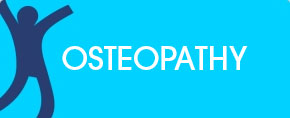One of the great challenges in health practices is the chronic pain case. To be specific, “Acute” and “Chronic” are time descriptors “Acute” means recent onset and describes presentations which are generally started less than 4-6 weeks ago. A “Chronic” presentation is one which has been present for more than 2-3 months.
Often patients use the terms “Acute” and “Chronic” to describe intensity or severity of pain which is technically not correct or appropriate.
When we talk about “Chronic pain” cases we are generally referring to those that have been suffering for 6 months or more. Generally speaking, these cases are complex and have often had lots of treatments without great success.
But what is Pain anyway?
What constitutes pain is a hotly debated and researched topic in the scientific literature. Pain is essentially an electrochemical phenomenon. There are no pain receptors in the body and pain is not an entity in itself. We have receptors for: heat, pressure, vibration, touch, as well as our higher senses: light (vision), auditory (hearing), and olfactory (smell). When we have a stimulus applied to one of these receptors, an electrochemical message is transferred through the nerves in the body to the spinal cord and up to the brain, which then interprets this message as either painful or innocuous.
Our interpretation is based on the threshold in our central nervous system. Think of this as a rating out of 10. If our threshold for pain is 5/10 and we receive a 7/10 stimulus, we will experience pain. Our response gives a release of neurotransmitters and hormones and a feedback mechanism to the muscles in the limb to help us avoid or manage the situation to try to reduce the pain we experience.
If a stimulus is 4/10, then we pass this off as a non-painful. The experience is different, the release of neurotransmitter and hormones and the feedback mechanism if different. What this means is that pain is a perceptual phenomenon which occurs within our brain, in other words, pain is ALWAYS in our head.
But what happens if our threshold is reduced?
Many things will influence our threshold. Stress, anxiety and depression can dramatically reduce our threshold. Often very “focused” or “intense” people are potential candidates for chronic pain. However, sometimes we end up in a pain “loop” which alters our threshold and contributes to a “Chronic Pain” presentation. When our threshold is reduced our system is more “sensitive” and the level 4/10 stimulus which we previously passed off as irrelevant is now perceived as a painful event and we have the same pain experience that occurred in the earlier example of a 7/10 stimulus.
The problem with chronic pain is that healthcare practitioners often struggle to get good outcomes. Patients will often describe a Yo-Yo phenomenon where they have pain, so they withdraw from their usual activities somewhat, which causes deconditioning, then they get fed up with doing nothing and get back into the normal activities, which causes another pain response, which then leads them to withdrawing again. This is often a downhill slide, where less and less is accomplished with increasing frequency and/or higher intensity pain; a self-reinforcing negative struggle. These cases are often being described as hypersensitive and in some cases will be diagnosed as having “Fibromyalgia”.
So how do we address these cases?
First and foremost, a thorough examination should be conducted to ensure that serious pathology is not present. Unfortunately, many of these cases have had extensive examination and investigation (often lots of x-rays) and are not being managed well.
If the case fits the profile of having increased sensitivity, then generally speaking, developing a routine is important. It is critical to identify what are the specific factors which trigger a pain response. For example: vacuuming the house causes pain. It is important to develop a degree of specificity around this. Often if the patient vacuums the entire house they will have pain, however, if they only vacuum one room, they will not have pain. This will often help us develop intervention strategies. At the same time, we will want the patient to shift their focus away from the pain and focus on good function and activities.
If for example a patient gets pain after a 15 minute walk, we may start with a strategy of walking for 5 minutes twice per day for the first week. We progress to a 6 minute walk for the second week, 7 minutes the third week and so on. This might seem like small steps, however, if a person has had 3 years of ongoing pain, and we follow this principle, then within 6 months they will be walking 30 minutes twice per day. If this is achieved without causing pain, we teach the nervous system to desensitize and adapt, the body is increasing strength and control and their threshold will slowly be pushed up.
So does this work all the time?
The short answer is no. In many cases with a methodical consistent approach, great success can be achieved. Sometimes other strategies are required. For difficult cases it may be useful to see a psychologist who specialises in Pain Management to help develop coping strategies, for some clients addressing anxiety, depression and stress issues will also help.
We sometimes will refer to a Musculoskeletal physician who specialises in Prolotherapy injects, which may help to break the pain cycle and get patients back on track.
Understanding and education are really the key, it will take time to gain control over the cycle, but consistency and persistence will pay off in most cases.
If you are interested in learning more about pain and management strategies, the book, “Explain Pain”, by David Butler and Lorrimer Mosely is an excellent read.





